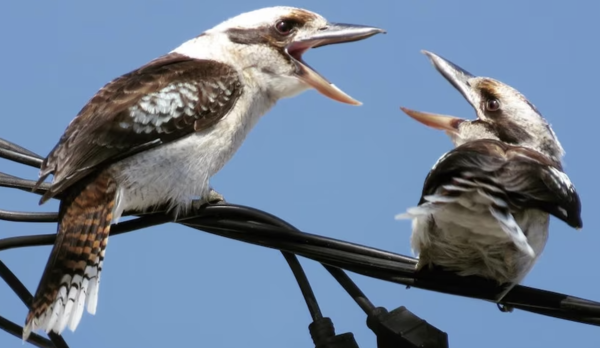Animals are incredible creatures with fascinating behaviors, and their ability to "laugh" or make joyful sounds is one of the most intriguing. This guide explores everything about laughing animals, from scientific discoveries to heartwarming moments that have gone viral.
Introduction: Can Animals Laugh?
The Science of Animal Laughter
Animals Known for Their "Laughs"
dolphins.html">Dolphins
Kookaburras
Rats
Pets and Their Sense of Humor
Emotional Animals: Joy and Play in Nature
Fun and Culture: Laughing Animals in Media
Fascinating Facts About Laughing Animals
Let’s start with the big question: can animals really laugh? While not all animals laugh in the human sense, some species produce sounds that resemble laughter when they’re playing or feeling joy. This behavior is not only fascinating but also gives us insights into the emotional lives of animals.
Scientists have discovered that laughter is often a social behavior, promoting bonding and communication among animals. But, it’s not just the "serious" science—we also love how funny animals can make us laugh with their antics!
Animal laughter has been a subject of study for decades. Researchers believe that laughter in animals, much like in humans, is tied to playfulness and social interaction.
Play Behavior: Laughter-like sounds often occur during play, signaling that the activity is friendly and non-threatening.
Social Bonds: Animals use these sounds to strengthen relationships within their groups.
Neuroscience: Studies show that animals like rats giggle at frequencies too high for humans to hear when tickled.
Fun fact: Laughter isn't limited to mammals—birds like parrots and kookaburras also display vocalizations that sound surprisingly like human laughter!

The laughing hyena is perhaps the most famous example of an animal that "laughs." However, their laughter isn't always about humor—it's a form of communication, often signaling excitement, nervousness, or submission within their pack.

Chimpanzees share a lot of similarities with humans, including their laughter. They chuckle during play or when tickled, making their social interactions even more endearing.

dolphins.html">Dolphins are incredibly playful and emit unique sounds during social interactions. Their "laughing" noises occur when they’re enjoying themselves, often while playing games or interacting with humans.

Known for their iconic "laughing" calls, kookaburras use this sound to establish territory and communicate with their flock. Their vocalizations are so striking that they’re often used in jungle soundtracks!

Yes, even rats can laugh! Researchers have found that rats emit high-pitched giggles when tickled or playing. It’s a sound of pure joy—though you’ll need special equipment to hear it!
Do pets like dogs and cats have a sense of humor? While they might not laugh in the human sense, pets often show playful behaviors that suggest they enjoy making us laugh.
Dogs: Some dogs make funny vocalizations during play, and their goofy antics often resemble a sense of humor.
Cats: Cats might seem aloof, but their quirky behaviors, like jumping into boxes or chasing invisible objects, often make us laugh.
Pets can also mimic laughter. Parrots, for instance, can imitate human giggles, adding a whole new layer of humor to their personalities.
Animals are emotional beings, and laughter-like behaviors are often a sign of happiness. Many animals, from Elephants-Are-Endangered.html">elephants to otters, engage in play that includes joyful sounds.
Social Animals: Species that live in groups, like wolves or primates, use playful behaviors to maintain social bonds.
Play Signals: Laughter-like sounds help animals communicate that their actions are playful, not aggressive.
These behaviors show us that joy and laughter aren’t just human traits—they’re part of the natural world.
Laughing animals have taken over the internet! From viral videos of parrots mimicking human laughter to adorable clips of dogs "smiling," these moments bring joy to millions.
Funny Memes: Laughing animal memes have become a staple of internet humor.
Cartoons and Movies: Animated characters like laughing hyenas in The Lion King highlight how animal laughter fascinates us.
Compilation Videos: YouTube is filled with compilations of funny animal noises and behaviors, often featuring laughing sounds.
These cultural representations not only entertain us but also spark curiosity about the real behaviors behind them.
Let’s wrap up with some fun facts about laughing animals:
Rats are ticklish and laugh when tickled—how cute is that?
Dolphins’ laughter-like sounds are linked to their playful personalities.
Kookaburras’ laughter-inspired name comes from their loud, cackling call.
Hyenas’ laughter is actually a way of expressing dominance and submission.
Humans aren’t the only ones who enjoy a good giggle—animals do too!
Laughing animals remind us of the joy and playfulness that exists in the natural world. Whether it’s a hyena cackling in the wild or a pet parrot mimicking your chuckle, these creatures show us that laughter truly is universal.
animal tags: Laughing-animals
We created this article in conjunction with AI technology, then made sure it was fact-checked and edited by a Animals Top editor.